Clearwater Marine Aquarium is a leader in marine mammal research and environmental conservation throughout Florida and the world. From monitoring the health and population of dolphins in the Gulf of Mexico to implementing conservation strategies to protect the manatee species in the Caribbean, our team collaborates with scientific partners across the globe to protect marine animals and their habitats.
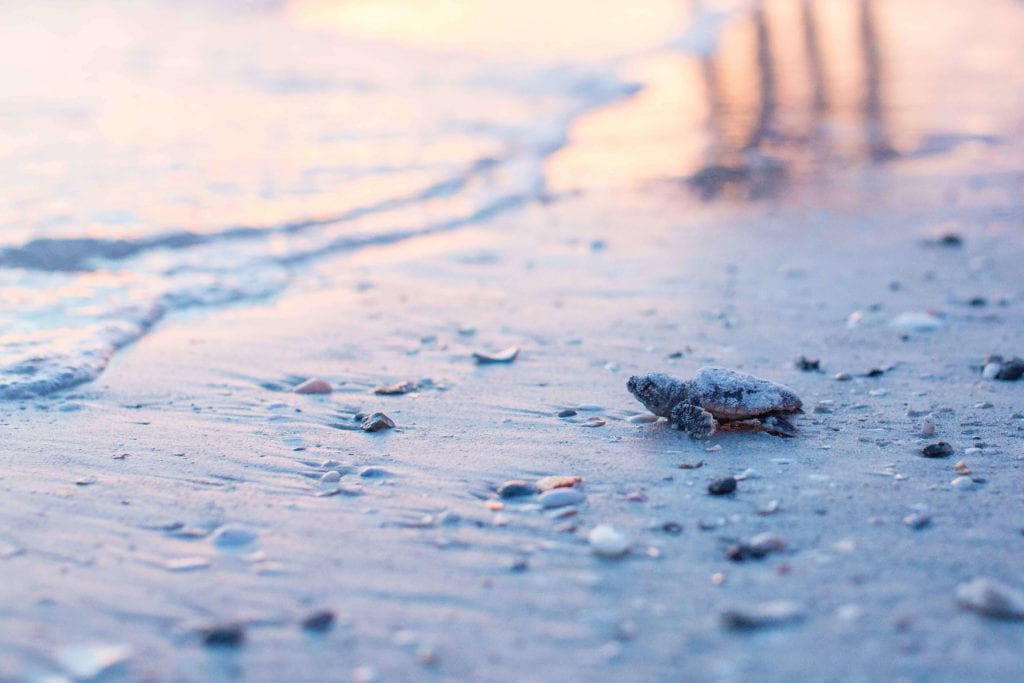
All You Need to Know About Sea Turtle Nesting Season
Sea turtle nesting season extends from May 1 through Oct. 31. Beginning April 15, Clearwater Marine Aquarium patrols approximately 21 miles of beach along North Pinellas County.
How are sea turtle nests located?
Our morning patrols reach the beach just before sunrise 7 days a week. Initially, our teams of volunteers, staff and interns search along the high tide line for evidence of sea turtle nesting, namely marks in the sand left by crawling females. Once tracks are located, we determine whether there is a nest present or if it was a non-nesting emergence, AKA false crawl. We mark the nests and collect various measurements from the nest site in order to properly monitor it throughout the season.
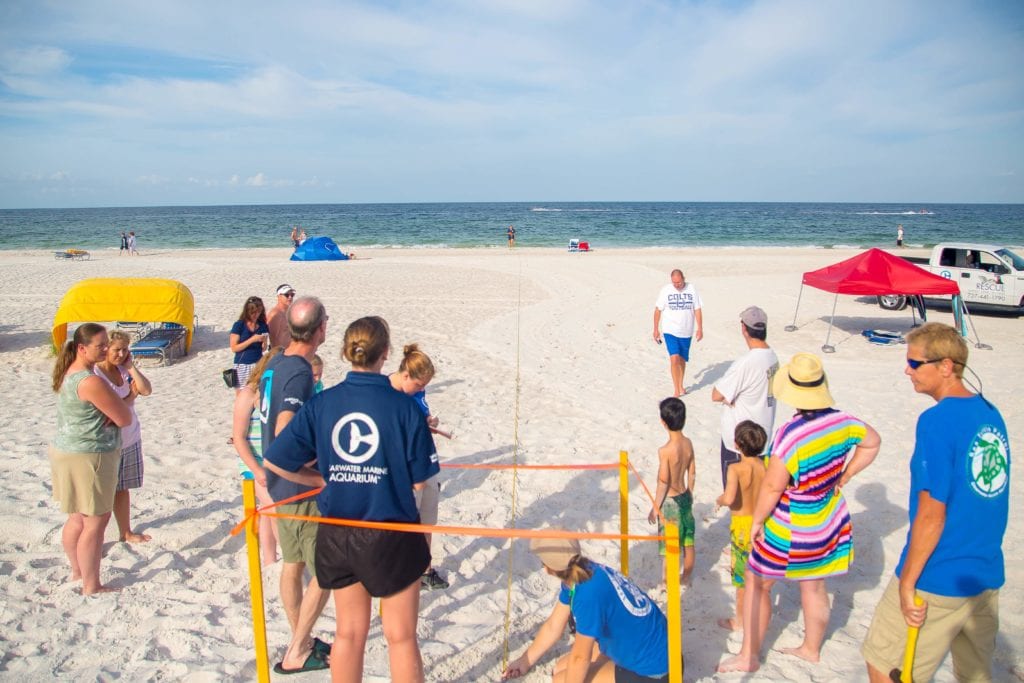
How are sea turtle nests monitored?
We primarily observe loggerhead sea turtle nesting activity in Pinellas County. Loggerhead incubation time is about two months.. Hatching activity is identified by tracks emerging from the nest sites. After a nest has hatched we wait at least 72 hours then excavate the nest and do an inventory of its contents to determine hatching success.
When are sea turtle nests found?
Generally, we find our first nest of the season in early to mid-May and the females will continue nesting until the middle of August.
What kind of sea turtle nests are found?
Primarily, we encounter loggerheads nesting on our beaches but on rare occasions have encountered Kemp’s ridleys or green sea turtles.
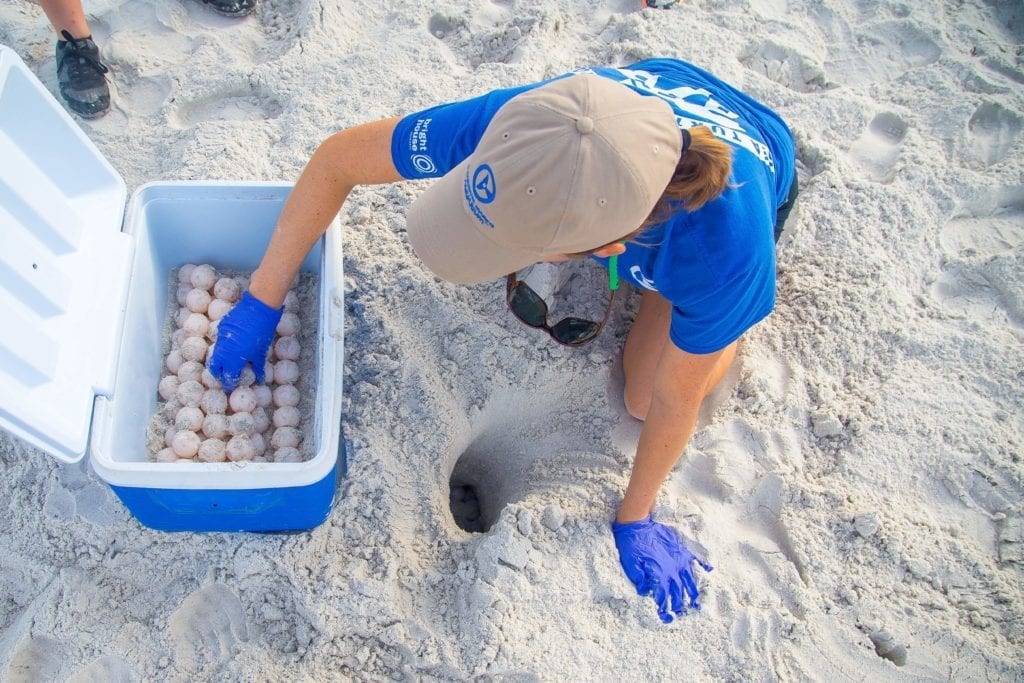
What does the sea turtle nesting team report?
We report our annual nesting data to Florida Fish and Wildlife Conservation Commission (FWC) and Pinellas County. To FWC, we report nests, false crawls, disorientation events, obstruction events, predation and vandalism. To the county, we also include weekly escarpment surveys and lighting surveys.
How many nests were reported during the 2023 nesting season?
In 2023, 227 nests were observed.
How You Can Help
- Use Sea Turtle-Friendly Lighting
- Under natural conditions, hatchlings and adult use brightness to guide them to the water from the beach. The reflection of the moon and stars over the water usually creates the brightest horizon, but on developed beaches, lots of artificial light (street lights, exterior/interior lights on homes, decorative lighting, etc.) confuse the turtle and cause them to think that those sources of light are where the water is. They crawl toward that light wasting precious energy they need to reach the ocean.
- For nesting females, artificial lights can deter them from emerging onto a beach at all, forcing them to select less optimal nesting sites to deposit their clutch.
Turn out unnecessary beach lights to help prevent disorientation of female sea turtles and hatchlings. Close your curtains and be mindful of bright lights shining on the beach. Keep it dark!
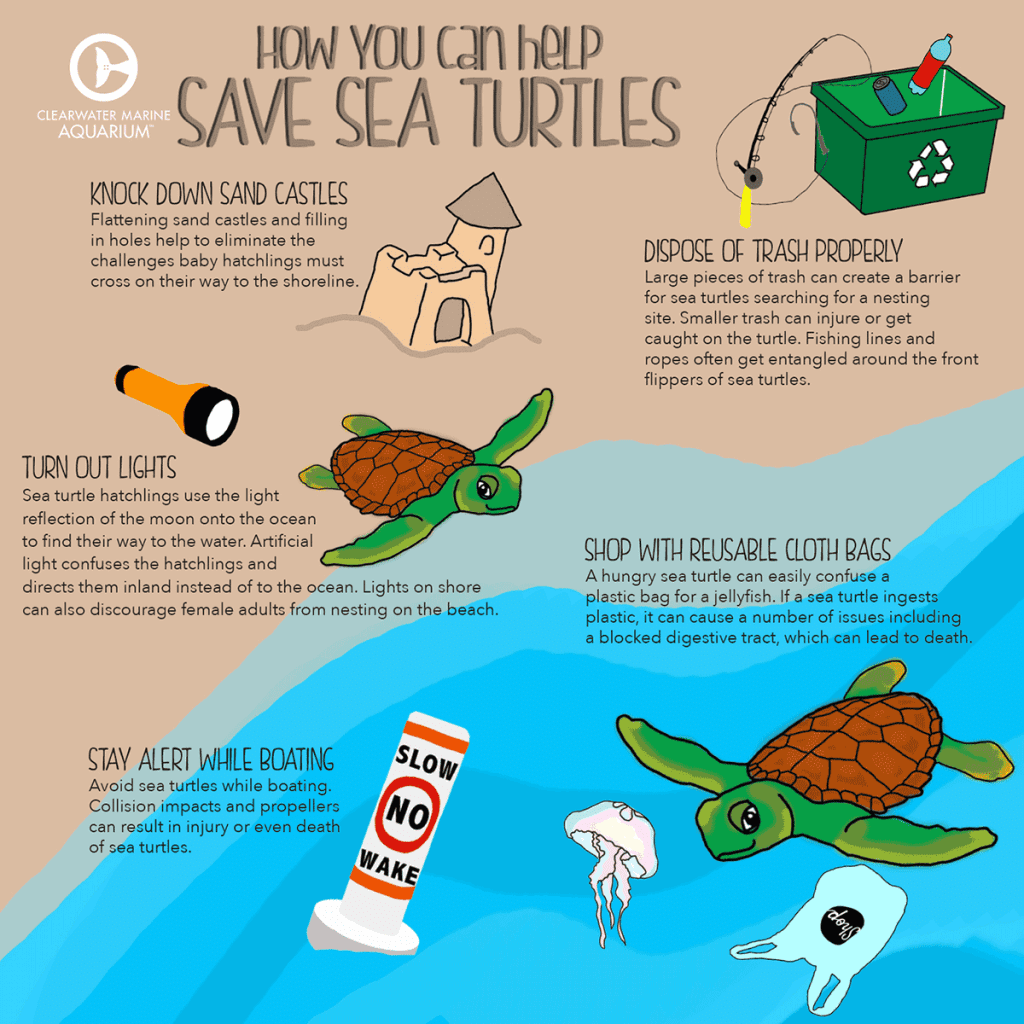
All marine turtle footage taken in Florida was obtained with the approval of the U.S. Fish and Wildlife Service and the Florida Fish and Wildlife Conservation Commission (FWC) under conditions not harmful to marine turtles. Footage was acquired while conducting authorized conservation activities pursuant to FWC MTP-19-263.
Protect the Nest
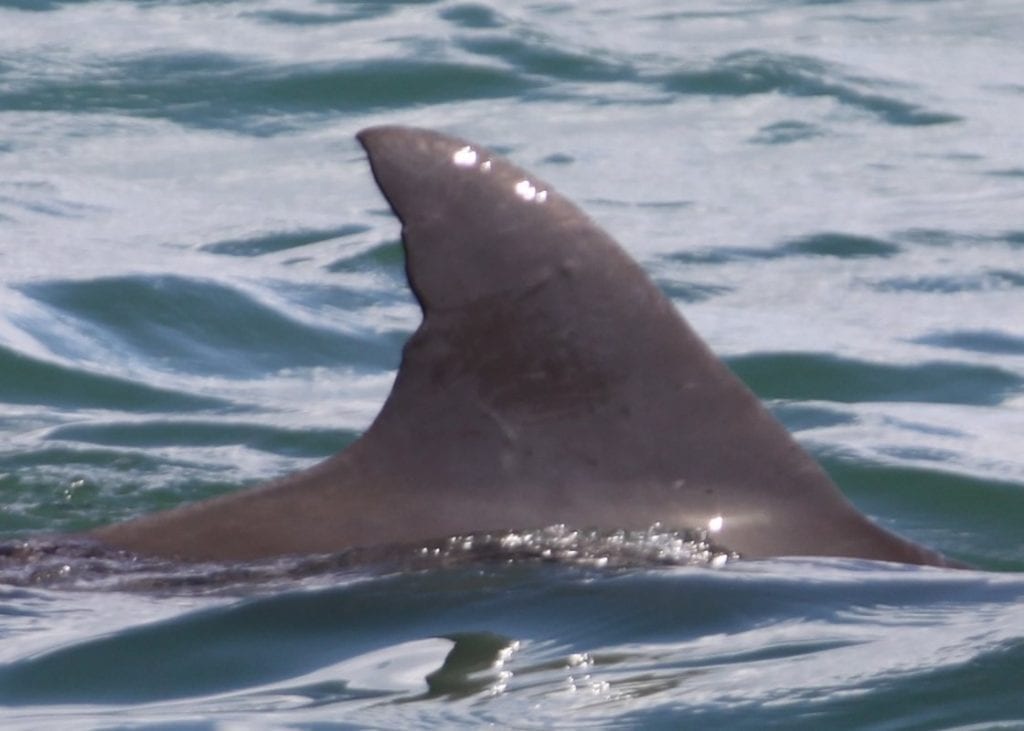
Dolphin Dorsal Fin Photo Indentification
Clearwater Marine Aquarium initiated the dolphin dorsal fin photo identification study in August 2013 to document the ecology of the bottlenose dolphin population of Clearwater Bay and Clearwater Harbor. Opportunistic photos of bottlenose dolphins are taken during CMA’s Dolphin Adventure eco-boat tour using National Oceanic and Atmospheric Administration (NOAA) Dolphin SMART guidelines.
Like a human fingerprint, no two dorsal fins are exactly the same. Each dorsal fin has its own unique shape, height, thickness, markings and notches. Also, a dolphin’s dorsal fin acquires various scars and markings during the dolphin’s lifetime. Because of their unique nature, pictures of dorsal fins are used to identify wild dolphins. Individual identification of members during photo identification studies assist with the attainment of information on group structure, site fidelity, movement patterns and population size.
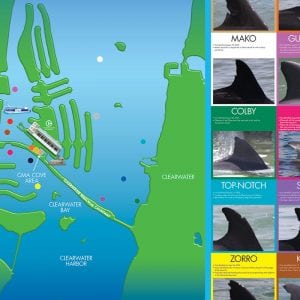
With the receipt of a General Authorization for Scientific Research permit from NOAA, CMA expanded its wild dolphin dorsal identification research program in August of 2016. The Research Team currently surveys the intracoastal waters and three miles out in the Gulf of Mexico for three counties (Pinellas, Pasco, and a portion of Hernando). Future plans include expanding the survey area further out into the Gulf of Mexico.
To date, our field biologists have identified and cataloged more than 126 dolphins using pictures taken of their dorsal fins.
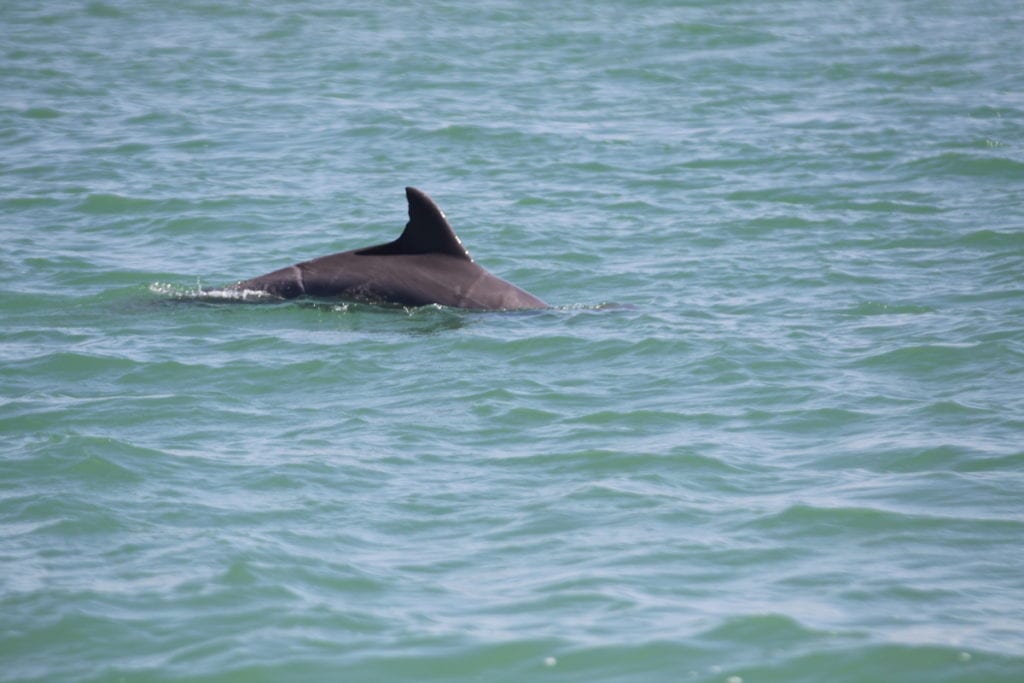
Rescue Team Dolphin ID Data
The Rescue Team also continues to contribute to the mark-recapture research study conducted by Dr. Ann Weaver and Mote Marine Laboratory by sharing photographs taken of stranded dolphins’ dorsal fins and flukes.
Research conducted and photographs collected under the NMFS Scientific Research Permit No. 19749.
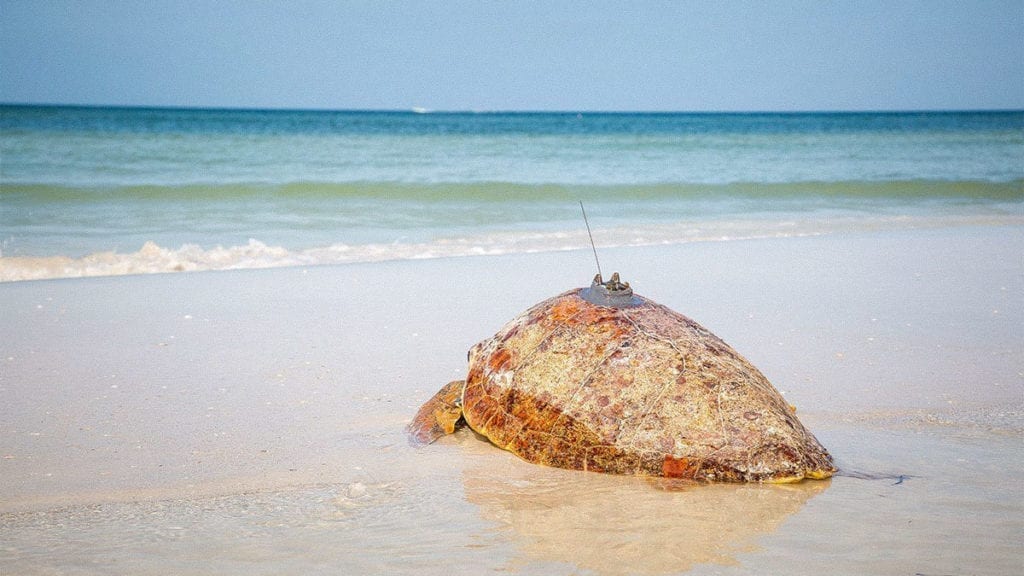
Sea Turtle Tracking
Satellite tracking is beneficial for research purposes including the migration of sea turtles, their foraging behavior and much more. You can learn about some of the sea turtles Clearwater Marine Aquarium has released with a satellite tag and view their tracking maps below.
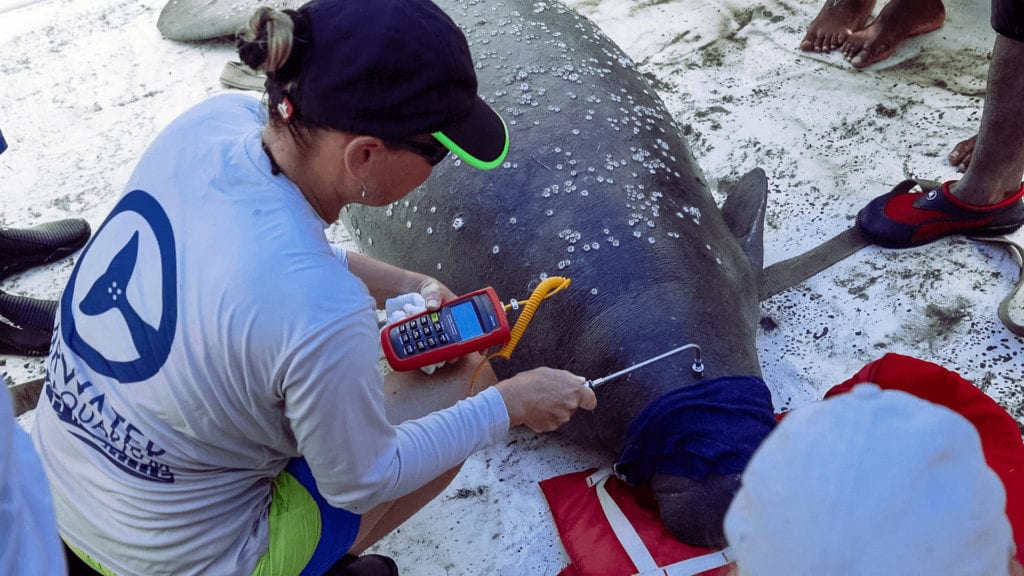
Clearwater Marine Aquarium is involved in a number of different research projects.
From studying right whales in the Atlantic to studying manatees in Crystal River, Clearwater Marine Aquarium has devoted many hours to field research with a goal of marine animal conservation in mind. In addition to this, CMA also spends time educating children and adults through outreach projects. Visit our Research Institute to learn more.
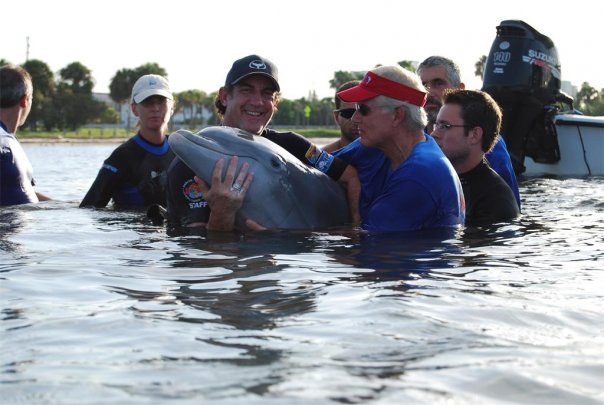
Research Mission
Clearwater Marine Aquarium works to protect and conserve our world’s fragile coastal ecosystems and the endangered species that call them home. We focus on the conservation of flagship species, such as manatees, sea turtles, and right whales, to ensure greater protection for the species themselves and for the sensitive habitats these animals rely on around the world.
CMA biologists and ecologists combine passion for their work with technical expertise to conduct rigorous scientific research, share their knowledge with managers to ensure adequate protection for endangered species, educate the public and conserve our coastal environments for the benefit of both people and animals.
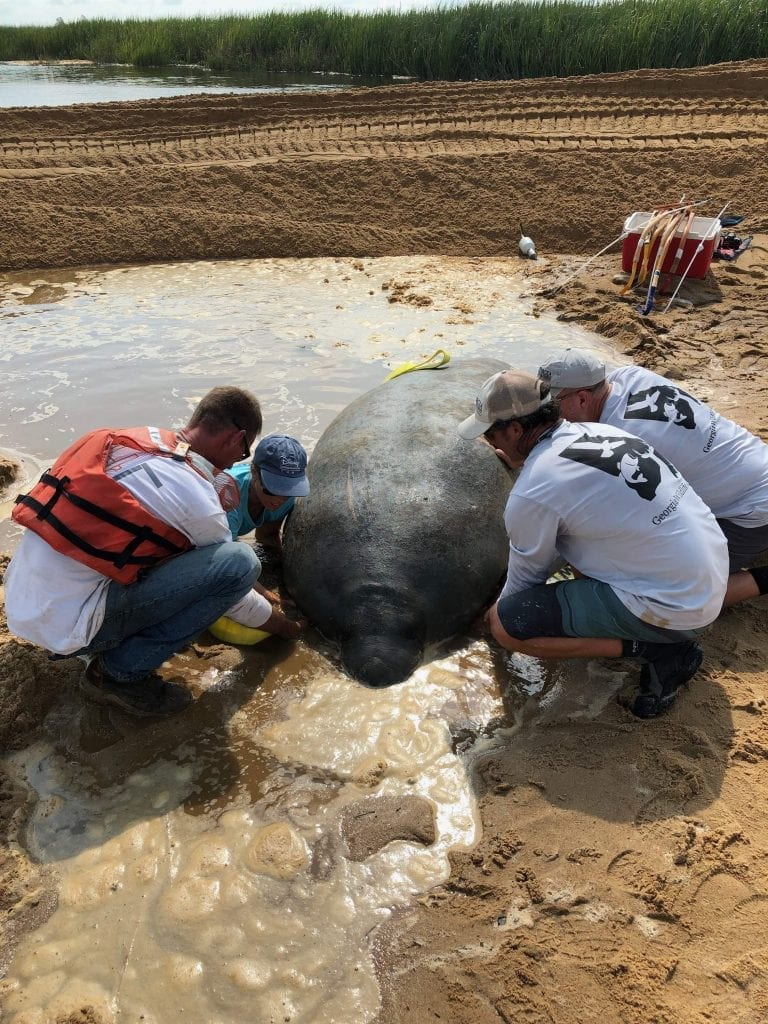
Expanding Research Efforts
The world-renowned research organization, Sea to Shore Alliance is now a part of CMA! Sea to Shore has made critical advancements in their work with manatees, right whales and sea turtles. This important work will continue and expand as part of CMA’s research efforts.
This merger will broaden our conservation and research scope, which will result in advancements toward the protection of species and habitats. Our team is pleased to embark on this new venture with CMA and begin realizing research goals and conservation successes.
Dr. James “Buddy” Powell, Executive Director of CMA Research Institute
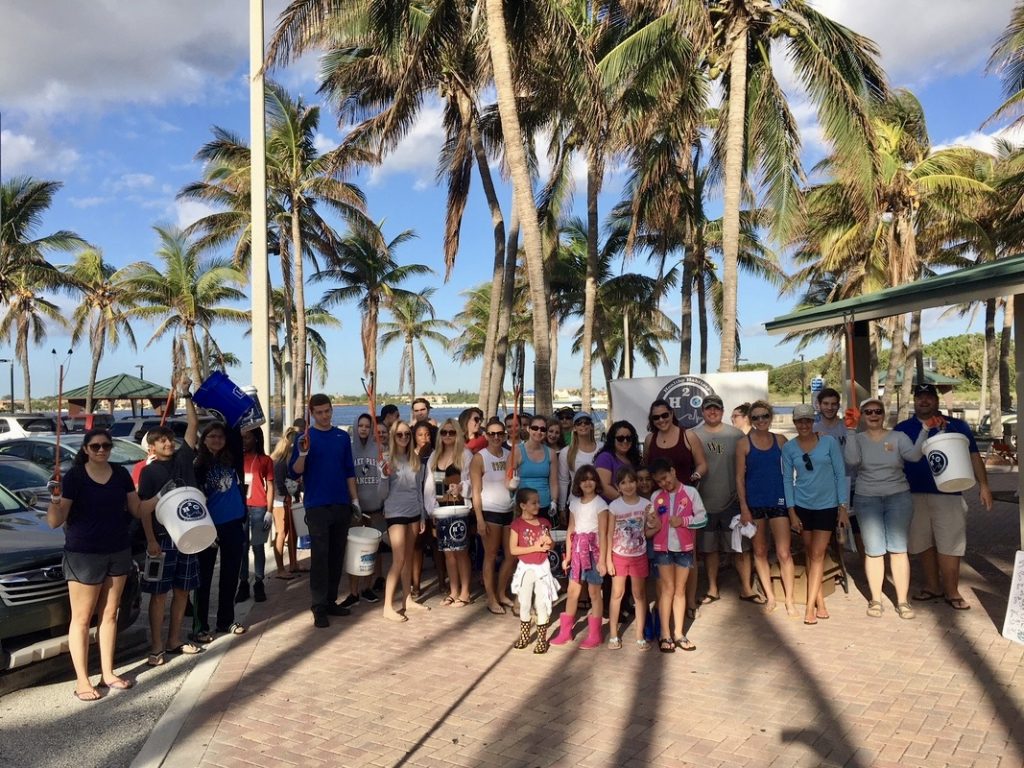
Healthy Habitats and Oceans (H2O)
Our scientists have witnessed the impacts of marine debris during our decades of work in the southeastern United States and the Caribbean. Shorelines and waterways strewed with litter and abandoned fishing gear lead to the deaths of sea turtles, manatees, dolphins, and North Atlantic right whales. Marine debris consists primarily of plastics and has been increasing dramatically.
Since much of this is preventable, CMA Research Institute launched H2O: Healthy Habitats & Oceans, an educational outreach and direct-action program targeting those audiences with the power to prevent and reduce marine debris: students, the fishing, and boating community, and the public. To reach this audience, the program utilized a mobile marine classroom (a vehicle outfitted with interactive educational exhibits) to conduct visits to middle and high schools and coastal community festivals. We also sponsor beach cleanups every month at Boynton Inlet in Palm Beach County.
Since our mobile classroom is currently out of commission, we now offer new, free virtual learning experiences for anyone interested. Our goal is to inspire change in personal habits and reduce the amount of single-use plastics we use as a society.
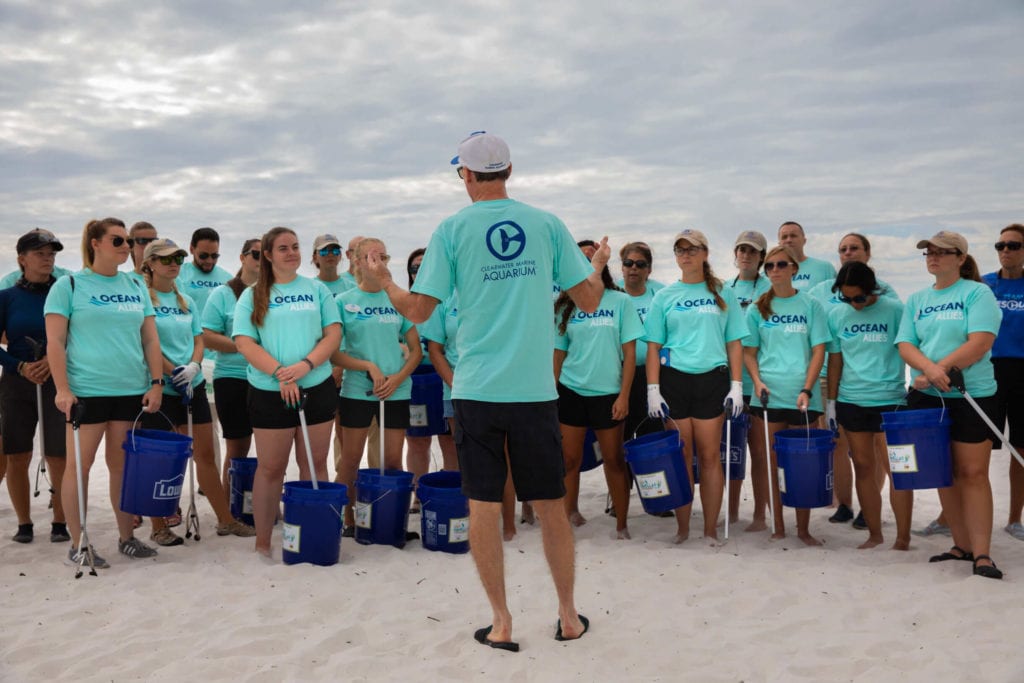
A Founding Member of Ocean Allies
CMA is proud to be a founding member of Ocean Allies.
The Ocean Allies project is a conservation plan designed to transform Clearwater Beach, home town of Winter the Dolphin, into the #1 recognized ocean-friendly beach in the world, and then take the project global. As tourists increasingly desire to travel to areas that promote environmental responsibility, the Ocean Allies leadership team will oversee the effort to engage Clearwater Beach and greater Clearwater businesses to develop and implement an eco-friendly Clearwater Beach brand, with a goal of improving the health of our oceans and beaches. Participating organizations will become “Ocean Allies” certified. Clearwater Beach is globally known and was named the best beach in the U.S. by TripAdvisor in 2018 and 2016, with gorgeous blue waters and white “sugar” sand.
Ocean Friendly Certified Businesses
- Island Way Grill
- Marina Cantina
- Salt Cracker Fish Camp
- Rumba Island Bar and Grill
- Bob Heilman’s Beachcomber
- Bobby’s Bistro & Wine Bar
- Clearwater Marine Aquarium’s Shark Bites Cafe
- Wyndham Grand’s Ocean Hai
- Wyndham Grand’s eSKPades
- Wyndham Grand’s DocK’s Pool Bar & Grille
- Sandpearl Resort’s Caretta on the Gulf
- Sandpearl Resort’s Tate Island Grill
- East Shore Motel Resort
- Sharmaine’s Salon and Spa
- Chapel By the Sea
- Good Vibes Juice Co. – Largo
- Good Vibes Juice Co. – Dunedin
- Escape Root Juicery
- Green Culture
- Evermore Cafe – Largo
- Whole Aveda Spa and Salon – Largo
- Whole Aveda Salon Spa – Oldsmar
- Midori Organic Salon & Spa – Largo
- Good Vibes Juice Co. – Dunedin
- Honu Restaurant – Dunedin
- Warrior One – Dunedin
- Dunedin International Film Festival
- Lucky Lobster – Dunedin
- Scone Age Bakery – Dunedin
- Meranova Bed & Breakfast – Dunedin
- Happy’s Bayou Bites – Dunedin
- The Green Table – Palm Harbor
- Cider Press Café – St Pete
- Neighborhood Joe – St Pete
- Vegan International Kitchen & Market – Tampa
- Poke HavanaSolar Vibes
- Sylvia’s ClubhouseThe Juice Bowl Spot
Making Waves
- 1600+ rescued sea turtles since 2010
- 2100+ Nests monitored since 2010
- 850+ Animals released since 2010
- 190K Volunteer Hours 2020-2021